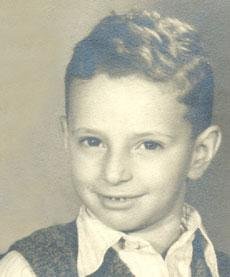Péter Kutas
Born: Unknown 1937, Budapest, Hungary
Péter was raised in a large and loving family. After 1940, the men in the family continued to lose their jobs until they were conscripted for forced labor. Péter was five years old when his father was conscripted; Péter never saw him again. 1944 marked the last year of his childhood. He was not even seven years old when he was forced to wear a yellow star and to move into a yellow star building. He had just turned seven when he witnessed a horrible pogrom at the yellow star house at 59 Népszínház street; 22 men were killed by the Nazis and the women and children witnessed the massacre. Among the victims were one of Péter’s uncles and his cousin. After the massacre the Nazis kept the women and children hostage at a sports field without food or drink for two days.
From December 1944, Péter was forced to move to the Budapest Ghetto and was living there in a crowded apartment with his mother, starving and freezing and in constant fear of death. While living in the ghetto, he witnessed hunger, illnesses and epidemics, and shootings killing hundreds and hundreds of people on a daily basis. Péter’s mother was killed when the building at 5 Síp Street was hit in a bombing on January 18, 1944, on the day the Ghetto was liberated. The orphaned Péter was adopted and raised by his aunt. After getting his degree in engineering, he got married and had two daughters.


